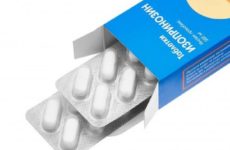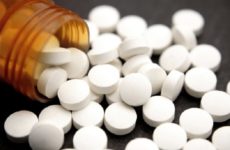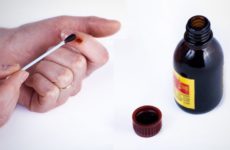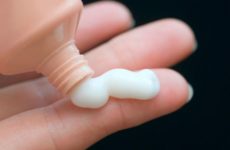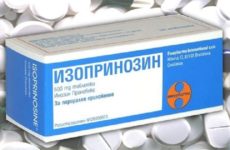With the onset of cold weather, children more often than adults become ill with colds, which weakens their already imperfect immune system.
Parents start looking for a remedy that could save their children. Such can be Polyoxidonium .
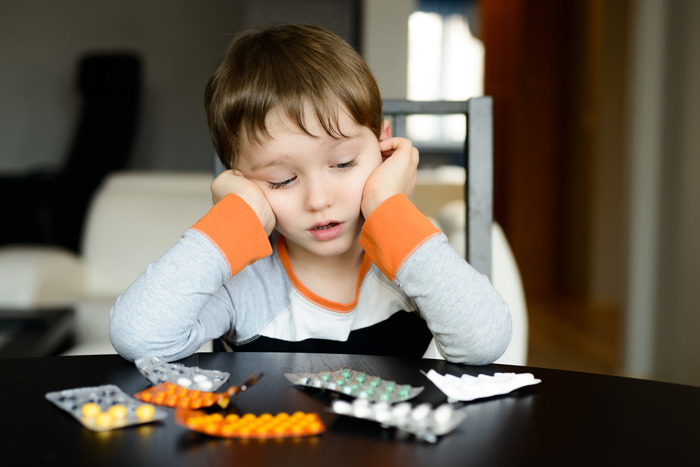
Содержание:
- 1 Description of the drug
- 2 Benefits of using the drug for children
- 3 From what age, from what age can a child be given?
- 4 Dosage
- 5 Instructions and rules of use
- 6 Side effects
- 7 What to do in case of overdose?
- 8 Cross drug interaction
- 9 Terms of sale and storage features
- 10 Price
- 11 Analogues and generics
- 12 Feedback from doctors and patients
Description of the drug
Polyoxidonium is a domestic drug belonging to the group of immunomodulators and immunostimulants, which has been used in pediatrics since 2004. It not only activates local and general immunity, but also detoxifies. The action of Azoximer bromide is complex:
- immunomodulatory;
- detoxifying;
- activating generator processes;
- antioxidant;
- anti-inflammatory.
The reduction in inflammation is achieved by increasing the production of anti-inflammatory cytokines. Trade name: Polyoxidonium®. The generic name is Azoximer bromide.
Compound
The active substance is azoximer bromide.
1 tablet – 12 mg. Ingredients: mannitol, lactose monohydrate, starch, povidone, betacarotene, stearic acid.
1 suppository – 6 mg or 12 mg. Ingredients: mannitol, povidone, betacarotene, cocoa butter.
The effect of the components on the body:
- Povidone – has a detoxifying effect, does not damage the mucous membranes of the gastrointestinal tract and does not accumulate in the body.
- Betacarotene – has antioxidant properties and protects cells from damage by active oxygen and free radicals.
- Mannitol is an osmotic diuretic.
- Lactose monohydrate – acts as a filler for tablets, capsules and powdered medicines. Sugar substitute.
- Potato starch is a binder, tablet filler.
- Stearic acid – refers to excipients, serves to evenly distribute and intertwine components in preparations.
- Cocoa bean butter – has a melting point close to natural body temperature, namely from 32 to 35 ° C. Promotes the healing of small cracks and scars, increasing the speed of regenerative processes. Hypoallergenic, which is important for children.
Release form
Lyophilisate in ampoules – used for injection, preparation of nasal drops and solution for inhalation. It is a porous hygroscopic, light-sensitive mass of yellowish-white color. Produced in glass bottles, in a package of 5 ampoules with a solvent (physiological saline).
Tablets – round, white or yellowish, flat-cylindrical, with a chamfer, with a risk – on one side, and the inscription “PO” – on the other. The package contains 10 tablets.
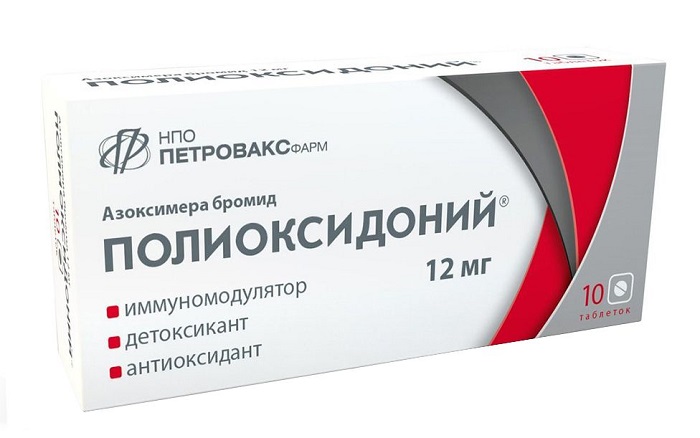
Suppositories – light yellow, torpedo-shaped, with a faint smell of cocoa. 10 pcs in a pack.
Prescribing a medication
It is prescribed for complex therapy in children:
- acute and chronic inflammatory infections;
- bronchial asthma complicated by chronic respiratory infections;
- intestinal dysbacteriosis;
- allergic reactions;
- atopic, complicated by purulent inflammation, dermatitis;
- burns;
- autoimmune processes;
- complications after surgery.
Polyoxidonium usually acts in secondary immunodeficiencies – then it emphasizes the effectiveness of therapy. This is manifested in the reduction of the treatment period. Also, the immunomodulator makes it possible not to use antibiotics, glucocorticosteroids and bronchodilators, and also lengthens the period of remission.
After administration, it is rapidly absorbed: half the dose after 35 minutes, the half-life is 18 hours. Its oral bioavailability is about 50%. The maximum concentration appears after 3 hours.
With intramuscular use, bioavailability is 89%, the maximum concentration is noted after 40 minutes. Half the dose is in the blood after 26 minutes. The half-life of parenteral and candlelight is similar – 36.2 hours. The drug is excreted, or rather, the products of its decay by the kidneys.
When administered rectally, the bioavailability is at least 70%. The maximum concentration is observed after 1 hour. The half-dose period is about 30 minutes. There is no cumulative effect.
The principle of influence on the HPV virus
The drug directly stimulates phagocytic cells and natural killers (macrophages in tissues and phagocytes in peripheral blood), thereby stimulating the formation of antibodies, interferon-alpha and interferon-gamma. All this allows you to weaken the influence of the virus, block the process of its reproduction and accelerate the excretion from the body.
It is known that the HPV virus can be in the body for years, but its activation occurs after a decrease in immunity. Polyoxidonium affects the cooperative interactions of T- and B-lymphocytes during the development of the immune response, increases the production of cytokines.
Benefits of using the drug for children
Its advantages compared to other modulators:
- complex therapy of infections and immunodeficiency gives better results;
- accelerates recovery;
- reduces the incidence of SARS;
- enhances sputum discharge in respiratory viral pathologies;
- does not allow the development of relapses.
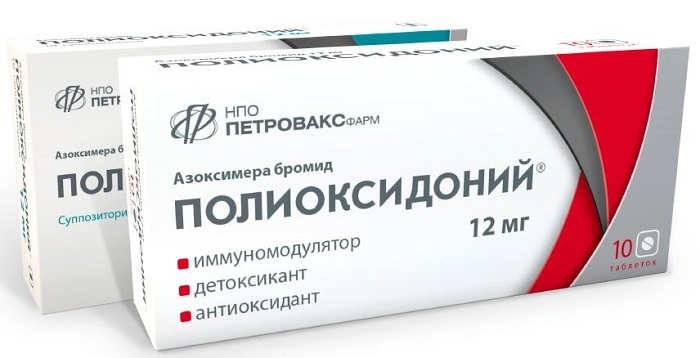
From what age, from what age can a child be given?
In general, Polyoxidonium is prescribed for children from 6 months. Tablets are forbidden to be used for patients under 12 years old, candles – do not use up to 6 years, powder – for babies.
Dosage
The form of release of the drug for treatment is chosen by the doctor.
Candles for children can be prescribed from 6 years old at a dosage of 3 mg. But in practice, pediatricians often prescribe the drug at the age of 4–5 years. The drug is rapidly absorbed.
Candles are injected into the anus at night before going to bed, preferably after defecation and perineal toilet. The therapeutic course is from 10 to 20 days. The dosage is determined by the doctor.
Tablets – the calculation rate is 100 mcg per kg of weight. Daily dosage – 1 piece from 1 to 3 times a day.
Lyfolizat – the dose and duration of use is determined by the doctor after establishing the diagnosis. Age and symptoms are taken into account.
Injections are usually prescribed for infants, since oral administration is difficult and ineffective for them.
Dosage for children up to a year and from 1–10 years: 100–150 mcg / kg of body weight.
Powder for nasal drops: the ampoule of physical is divorced. solution, sterile or purified water – for 1 ampoule in 3 mg 1 ml of solvent. 1-3 drops of medicine are instilled into each nostril up to 4 times a day.
Instructions and rules of use
Due to the different forms of release, Polyoxidonium has different application rules. According to the instructions, the break between courses should be at least 3 months. You do not need to take Polyoxidonium more often.
in tablet form
For children, the drug should be prescribed by a doctor, since it is a very strong immunostimulant that has not been fully studied. Tablets are allowed to be given to children from 12 years of age. Reception is carried out in two ways: orally and under the tongue – sublingually. The tablet is taken half an hour before meals.
Children over 12 years of age should not take more than 12 mg per day. The daily dose is divided into 3 doses.
Sublingual tablets are used for diseases of the mouth and throat. The dose and method of application is prescribed by the doctor according to clinical indicators.
The course of application of Polyoxidonium for viral infections is 2 weeks. The course for prevention is 3 weeks.
For herpes, stomatitis, chronic tonsillitis: 1 tab. 3 times a day for 2 weeks. For chronic sinusitis and otitis: 1 pc. morning and evening, up to 10 days.
Candles
Candles for children are allowed only from the age of 6, and when used at an earlier age, they are cut into two. Before use, you must consult a doctor. Candles are administered once a day, the duration of treatment depends on the doctor’s prescription. Before use, empty the intestines completely.
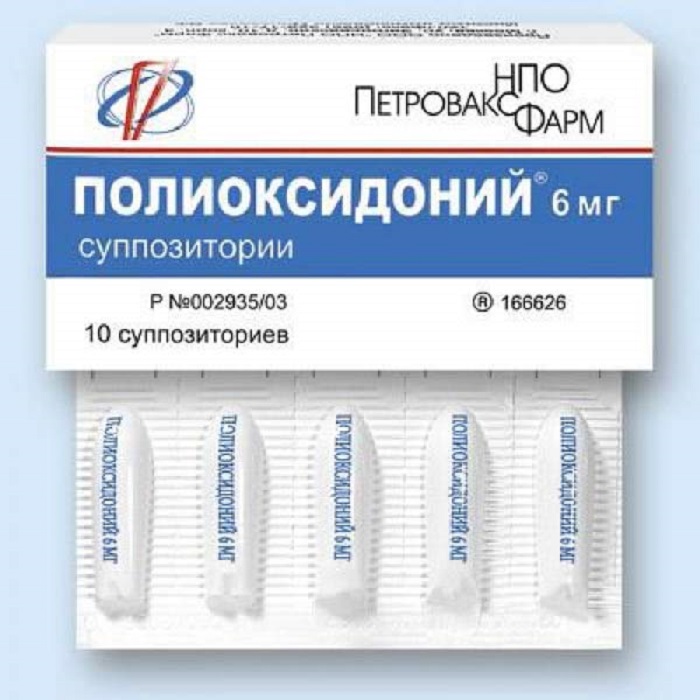
Usually, children after 6 years of age are given one candle for 3 days, then every other day, in a course of 10-20 pcs.
Lyophilizate (powder)
The lyophilisate is administered intramuscularly or intravenously, at the discretion of the physician . With droppers, Polyoxidonium can be dissolved in Hemodez-N, rheopolyglucin or 5% glucose solution.
Then the resulting solution is injected into a vial of the selected solution with a volume of 250 ml. The solution is prepared immediately before use. Droppers are most often used for acute allergic reactions. Improvement is immediately noticeable after 2 days.
Nose drops are the most common form of application for children. For nasal administration, a dose of 6 mg is dissolved in 2 ml of distilled or boiled water, or saline. 1 ml of solvent = 20 drops.
With this proportion, 1 drop of the solution will contain a dose per 1 kg of weight, i.e. 150 mcg. The resulting ready-made solution can be stored in the refrigerator for a week. Before use, the drops are preheated to room temperature.
For intramuscular injection, the ampoule is dissolved in water for injection or saline at the rate of 3 mg per 1 ml. For intravenous injections, a 3 mg ampoule is diluted in 2 ml of 0.9% sodium chloride.
To prepare an inhalation solution, 4 ml of saline is injected into a vial with 3 mg of powder. Draw up 2 ml with a syringe and pour into the nebulizer chamber. Inhalations are done 2 times a day for a week.
Side effects
Adverse reactions occur rarely and appear as redness, swelling, itching around the anus, due to individual sensitivity to the components of the drug. With intramuscular injection, pain may occur at the injection site.
What to do in case of overdose?
In case of overdose, discontinue the drug and consult a doctor. But so far, not a single case of overdose has been registered.
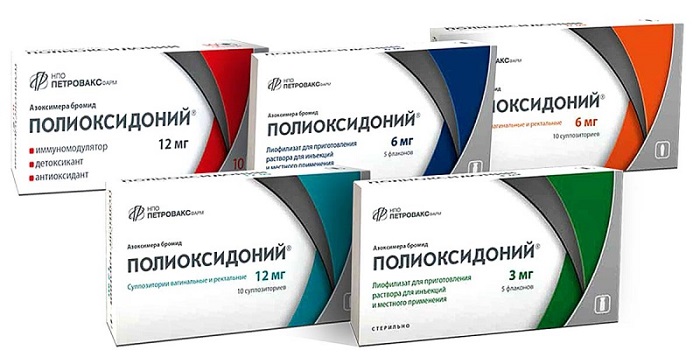
Cross drug interaction
Azoximer bromide is compatible with many drugs: with any antibacterial agents, cytostatics, antihistamines and glucocorticoids, bronchodilators; and tablets – with beta-agonists.
If a person is already taking these or other medicines, a doctor’s consultation is needed before taking them. With intravenous (drip) administration, it is impossible to use protein infusion solutions, for example, with amino acids, to dissolve the lyophilisate.
Terms of sale and storage features
The shelf life of any form of release is no more than 2 years. Expired drug should not be used. The product should be kept away from children. Store in a dark, dry place at a temperature: lyophilisate – 4-8 ° C, tablets – 4-25 ° C, suppositories – 2-15 ° C.
By prescription, only lyophilisate is dispensed, tablets and suppositories are sold freely.
Price
Price range for Polyoxidonium in pharmacies:
- tablets 12 mg – 575–760 rubles;
- suppositories 6 mg – 790–915 rubles;
- suppositories 12 mg – 970-1100 rubles;
- lyophilisate for injection 3 mg – 660–750 rubles;
- lyophilisate 6 mg – 730–1200 r.
Analogues and generics
The analogues of Polyoxidonium are: Engystol, Genefron, Neuroferon, Kipferon, Derinat, Cycloferon, Gerbion , Florexil, Bioaron, Arpetolid, Arpeflu, Imunofan, Ribomunil, Ismigen, Immunal, Taktivin, Likopid, Izprinozin , Polymuramil, Tsitovir-3, etc.
Feedback from doctors and patients
Veronika, Cheboksary. “We use the drug in autumn and spring twice a year in courses. Dilute the powder and drip under the tongue. The kid is 4.5 years old. They stopped getting sick in kindergarten after they began to use Polyoxidonium.
Svetlana, Khabarovsk. “We tried it for the first time when I was 2.5 years old. I sent my daughter to kindergarten, and she immediately fell ill after 3 days. From snot and cough did not get out. I got sick every 10 days. We received a course of Polyoxidonium six months ago, went to the garden without sores. Now we are sick again, but not much. I want to sip again.”
Olga, Mytishchi. “My child already goes to school, but he takes Polyoxidonium from kindergarten. I spend 1 prophylactic course in the fall. I am very glad that the child did not get sick even once.
Karina, St. Petersburg. “The tablets are tasteless and dissolve well under the tongue. It helped a lot in kindergarten not to get sick.”
Valentina, Omsk. “My son is 13 years old. During the flu epidemic, he became very ill: the temperature of 39.5 could not be brought down by anything, he was suffocating and could not get up.
The pediatrician prescribed polyoxidonium in candles with the rest of the medicines , but the teenage son flatly refused them. Then I bought it in tablets. And what? Immediately the next day, improvement, the temperature subsided. Highly recommended for kids.”
Tatiana, Arkhangelsk. “I gave my daughter Polyoxidonium for the flu. I am still grateful to my mother for the advice to buy Polyoxidonium. The drug helped immediately. My daughter came to life, the temperature dropped by the evening, her head stopped hurting.

Zina, Moscow. “I was not very happy when the pediatrician prescribed us polyoxidonium at the age of 2, because I had read about this drug and was afraid of it.
But because of the seriousness of her daughter’s illness, she decided to try it, and there are still more good reviews. In vain I doubted, this is a miracle, not a drug. It got better right before my eyes. During the flu epidemic, it was not the first time in my life that I got sick. Since then, I have been the most ardent supporter of Polyoxidonium.
According to doctors, Polyoxidonium is effective both in complex treatment and preventively. The effect is shown at once, still none of children remained without result.
Doctors also note the effectiveness of the drug, which does not depend on the form of release. The only downside is the high cost. But even this compensates for its effectiveness and duration of exposure.


